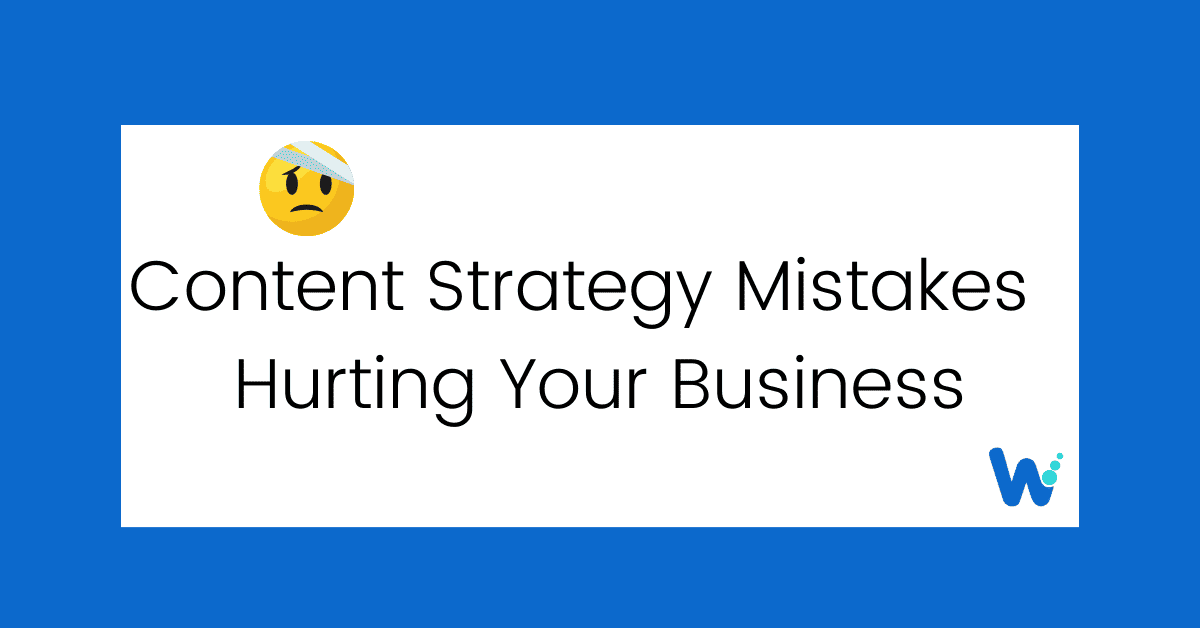When it comes to creating and distributing content, businesses often depend on or rely on a content strategy to guide their efforts. Content strategy can be explained as a plan or framework that outlines how a company will create, publish, and manage content across various channels and platforms.
Social media posts, blog articles and email newsletter content play the role of a main character in engaging with customers and building brand awareness. A well-created content strategy can help businesses stay organized and consistent in their messaging while helping them achieve their marketing goals.
In the digital age today, there is an abundance of online information. In these times, understanding the content strategy meaning is more important than ever. It can help businesses slice through the noise and stand out from their competitors while also ensuring that their message resonates with their target audience.
This article aims to give an overview of content strategy and its importance for businesses. By the end of this article, readers should better understand what content strategy is, how it can benefit their business and some important key considerations for creating an effective content strategy.
Steps Of Making A Content Strategy
Many critical measures must be taken by businesses to assure the profitability of any content, which can be assured only by an ideal content strategy planning, and with this; another of the most important duties is to understand their organizational goals. This means identifying the specific aims and objectives the organization expects to achieve through the information marketing initiatives.
Define Your Business Objectives
After creating a concrete base, the company’s goal in the following stage is to specify its precise aims. They include improving audience exposure on the website- generating prospects, or increasing revenue. Organizations may confirm all their marketing attempts concentrate on producing results in alignment with the overall aims by identifying the goal.
The final part of this procedure is to match the content to the business goals. This basically involves developing material that is pertinent and relevant to the target audience while also complementing the organization’s overall goals. Businesses can achieve this by developing a constant and cohesive corporate pitch that connects with their target audience and encourages engagement.
How to create a content strategy? It can be necessitated by careful thought of the company’s aims and objectives along with the demands and interests of its target audience. Businesses may establish compelling content that efficiently engages their market and generates outcomes that resonate and appeal with their general audience interests and by following some further steps.
Research And Ideation
Source: pexels
Alt text: a group of people having a meeting
Research and creativity are super important stages in building a good content strategy. The process involves investigating the target demographic and the market trend to figure out subjects and ideas that will appeal to or resonate with the audience. This can be easily performed by conducting interviews or focus group interviews, examining website analytics data and watching posts on social media.
Following the study’s conclusion- the main step is brainstorming. This entails coming up with content ideas that interest the target audience while aligning with the company’s aims and objectives. So according to the tastes of their audience, businesses can explore several formats for their information, such as blogs, infographics, videos, or podcasts.
Writing And Editing
After the appropriate or relevant ideas have been developed and collected into a timetable, the following stage is to construct the content. This entails creating a strong flavor that is both fascinating and instructional, as well as applying SEO best practices.
Businesses should conduct research to back up their ideas and ensure that they deliver relevant information to their potential customers. It can only be obtained by reading trade publications, running keyword searches, or monitoring talks on social media platforms.
Now one needs to edit and revise the text after it has been written. This includes examining the text for uniformity and clarity and ensuring consistency with the company’s overall general narrative and branding. Companies should also ensure their product is SEO-friendly by including important keywords and metadata.
Content Distribution
Distribution requires the creation and editing of the content. This includes selecting the appropriate distribution channels for the content and creating a product distribution strategy to guarantee it reaches the intended audience.
When selecting channels for content distribution, companies, of course, must consider the preferences of their core audience and places. For instance, here are some content strategy examples of this: social networking sites, email newsletters, and industry journals: Organizations may ensure that their information reaches their intended audience quickly and effectively by developing a content market plan.
Ultimately- developing successful, compelling content takes careful preparation and execution. By following these steps, businesses can build a marketing plan that efficiently attracts their audience and serves their business aims.
Mistake 1: Lack Of Audience Research
If you’re trying to create content that resonates with your target audience, you must conduct some serious audience research. And we are not just guessing what your audience might like – we are talking about getting into the small or minor nitty-gritty details of who they are, what they’re interested in and how they consume content.
If you don’t research, you could create content that doesn’t connect with your audience. And that’s a big problem because it means you won’t get the engagement or conversions you’re hoping for. Plus, it’s just a waste of your time and resources.
That’s not the worst part; If one doesn’t research, their audience could make serious mistakes that could damage the brand’s reputation. Imagine putting out tone-deaf content, offensive or irrelevant to your audience.
If you’re trying to create content that resonates with your target audience, you must conduct some serious audience research for your website development and social media platforms. And we are not just guessing what your audience might like – we are talking about getting into the small or minor nitty-gritty details of who they are, what they’re interested in and how they consume content.
If you don’t research, you could create content that doesn’t connect with your audience. And that’s a big problem because it means you won’t get the engagement or conversions you’re hoping for. Plus, it’s just a waste of your time and resources.
That’s not the worst part; If one doesn’t research, their audience could make serious mistakes that could damage the brand’s reputation.
How To Fix This Problem?
It’s very simple: conduct audience research. This could be creating a perfect content strategy for social media or website platforms, or simply talking to and acquiring an understanding of their customer needs. The more you understand your target audience, the more qualified you will be to produce games that speak to them.
And here’s a pro tip: don’t just conduct audience research once and then stop; because your audience is continuously changing, you must adapt to their shifting behavior and preferences. Make demographic study a regular element of your content strategy, and you’ll be well on your feet to create materials that the audience craves.
Mistake 2: Inconsistent Branding And Messaging
Source: wordscloud
Alt text: team of content writers working
You’re making a big mistake if you don’t keep your company vibes consistent across all mediums. Having a constant brand vibe makes it easier for customers to recognize and understand your business, which is particularly essential.
Your audience will become extremely confused whenever your branding and communication could be more consistent. Because they would need to be clearer about what your brand stands for, they won’t know what to expect from you, making it harder to gain their confidence and loyalty.
How Can You Fix This Problem?
It would be best if you had to create strong corporate rules and a message framework. This involves understanding how to develop a content strategy and then focus on creating the brand’s identity, beliefs and voice and ensuring consistency across all platforms. This will assist you in developing a brand that is instantly recognizable and with which people can relate.
But hold on! There are more – When your advertising and communication could be more consistent, you are not only confusing your consumers but also diminishing the impact of your brand. That means you won’t be capable of leaving as strong of an impression on your client, which is bad news.
Mistake 3: Focusing On Quantity Over Quality
Some people are all about that quantity, thinking that the more content they put out, the better. But let’s get real – if you’re putting out low-quality content- everyone will like or engage with that.
The importance of quality content cannot be overstated. It’s what sets you apart from all the other noise out there and helps you connect with your audience. Quality content is engaging, informative and very valuable to your audience.
If you’re focusing on quantity over quality, you’re going to have some major consequences dealing with it. For one, you’ll be impacting your brand’s impact rather than making as much of an impact on your audience. Plus- your audience will start to lose interest in your content if it’s not providing them with any value.
How Do You Fix This Mistake?
By prioritizing quality over quantity, of course! Take the time to think about how to make content strategy and then focus on the process of creating valuable and engaging content for your audience. Research to better understand what your audience is looking for and focus on creating content that meets their needs. If you can’t put out as much content as you used to, that’s okay -because your audience will appreciate the quality over the quantity.
Mistake 4: Ignoring SEO
So you’ve got your fantastic content ready to go, but also, are you certain it’s search engine optimized? Ignoring SEO could be detrimental to any content strategy. This is why:
SEO’s Significance-
SEO- search engine optimization; is a super tool for getting your content in front of your intended audience. Increase the visibility of your material in search engine results pages by optimizing it for search engines (SERPs). This, in return, can raise the amount of traffic to your site and allow you to connect to more prospective customers.
The Risks Of Ignoring Seo –
Ignoring SEO can also make your content hidden deep in search engine results, making it more difficult for your target group to find. This could lead to reduced traffic and interest on your web, impacting your company’s bottom line.
How To Fix This Mistake?
To avoid making this error, emphasize SEO when writing content. Doing keyword research -tweaking your headlines or meta descriptions and including internal and external links are part of this process. Adhering to these guidelines ensures that your material is findable by browsers and easily accessible to your intended audience.
Mistake 5: Not Measuring Results
Source: Pexels
Alt text: A group of people planning their business
When it comes to their content strategy, many people need to track their results to avoid mistake number 5. If you would like to adjust and develop, you need to note how the product is used. How can you identify what works and what doesn’t if I don’t even study your results? This is similar to genuinely competing with someone who takes this seriously.
Why is tracking the quality of your material so critical? For example, it enables you to better understand your market. As a result- they might detect what stuff they are much more intrigued by and use that information to develop further content. It also lets you know if you’re on track.
It also lets you know whether you’re on schedule on understanding what is a content strategy for your business. Were you getting the views, clicks and sales you wanted? One can of course change their strategy.
How To Fix This Mistake?
If you do not track your progress, you’re flying blind. You won’t be aware of what functions and what doesn’t- And this can save effort and time. Not to add missed chances.
How can you correct this error? You need to establish some measuring instruments and record your metrics. You may use devices such as Google Analytics to determine how many people visit your site, when they stay and which pages they view. Social networking participation, email marketing, and marketing objectives can be tracked.
The idea is to establish certain objectives and monitor your advancement on digital marketing platforms. Are you attempting to increase the number of visitors to your blog? You may want to boost the number of people who get your emails. Whatever your objectives are, be sure you’re understanding what is a content strategy and then measuring the correct indicators to determine whether or not you’re on track. That way, you may make changes and enhancements as you go.
Conclusion
A content strategy is fundamental for any company seeking to develop a strong internet presence and communicate with its target audience. Companies may construct an effective and efficient content strategy by identifying corporate objectives, doing surveys, setting brand rules, prioritizing quality over quantity, optimizing for SEO, and assessing content performance. And, for even more content strategy tips and suggestions here visit ; Wordscloud – the ideal place for all about content marketing!
What exactly is content strategy?
The technique of designing and developing media connected with a company’s aims and targeted to its target group is known as content strategy. It entails creating and disseminating worthwhile and pertinent content to attract, connect, and keep a certain group.
What is the significance of content strategy for businesses?
Businesses need a content strategy to create material that engages with their target market and achieves their corporate goals. It guarantees that organizations develop top-notch, relevant and very interesting material that assists them in positioning themselves as business opinion-makers and cultivating a devoted core audience…
How could organizations correct their content strategy flaws?
Companies can correct their content strategy imperfections by performing audience research, developing brand rules and message frameworks, emphasizing quality over quantity, optimizing their search-engine-optimized content, and using evaluation tools to track content strategy.
What are some of the most typical digital marketing blunders made by businesses?
Lack of consumer research, unclear branding and message, relying on quality over quantity, disregarding SEO and failure to measure the impact of their content are some of the most typical strong content blunders firms make.
How can businesses evaluate the success of their content?
Businesses can determine the effectiveness of their content by analyzing measures such as web traffic, involvement, leads, purchases, and money. Businesses can use assessment tools like Google Analytics and social media analytics to track these signals and understand how their content works.









